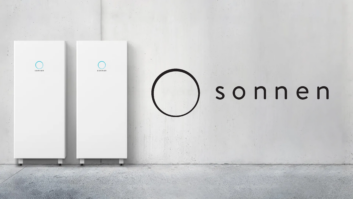Editor’s Note: In the July 2003 issue of Residential Systems, Frederick Ampel wrote an article titled, The Value of Design. Based on the number of e-mails that the author received, the article apparently tapped into a sensitive area with our readers. Most stated similar key points in their communications, and with permission, we have chosen one to represent all. Here are the comments of Jessica Kuhns, sales manager of Current Concepts Home Automation Specialists in Coopersburg, Pennsylvania, and Mr. Ampel’s follow-up article in response.
“I enjoyed your article of ‘The Value of Design’ in the July issue of Residential Systems. Our company is a member of CEDIA. I have been with them for 18 months. About eight months ago, I attempted to change our procedures by charging a design fee. I had created a ‘Pre-Design Budget Evaluation’ form that was filled out and presented to the clients during or immediately after our initial interview. Basically, it was a summary of the system(s) that we concluded would fit best into the homeowner’s lifestyle, and an estimated price range (ex. $50,000 – $70,000) of those systems. The form was used to confirm that we were on the ‘right track’ with both ideas, time line and budget. If the homeowner was comfortable with us, the ideas and price ranges…we then would ask for their permission to move forward and prepare a detailed custom proposal, along with asking for a retainer/design fee.
This was used for about two months, and all but one of our new clients had a problem with this process. Some of the objections were, ‘Your competitor doesn’t ask for a design fee,’ or ‘I want a proposal, but I still want to shop your competitor(s),’ or ‘You didn’t do any work yet, and you are asking for money?’ or ‘how about if I don’t like the proposal at all, do I still have to pay you if you can’t meet my needs?’
After losing a lot of the opportunities that we couldn’t afford to lose, we stopped using this procedure. To this date, we still are not charging for design. And we have three close competitors that also do not charge design fees.
In your professional opinion (and based on your experience), how do we make this work? And what kind of language are you using (or forms) to keep the rapport with the prospective clients and have them agree to this charge? Also, what do we charge? I was using figures that simply matched the time we invested up to that point.”
To Jessica and everyone else, here are some follow-up points worth your consideration. The problem of peer support or lack thereof is a core issue for this industry to resolve. Whether it’s fees for design services or pricing below profitability on competitive bids, it only takes one or two “dealers” in an area to make it very difficult for the rest to hold their ground.
The oft-proven fact that those who don’t support sensible professional practices and fees for service structures will usually be out of business in a year or two does not solve the problem for their colleagues during time that they are “in the business.” By setting the standard so low, these “dealers” are forcing the whole level of offerings in the surrounding area down to their level, cheating themselves and their customers (as well as their competitors) of the opportunities that professional services could be creating.
When to Charge What. One specific point that needs to be made to all who have suffered from this problem is that you may have been “jumping the gun” a bit on when you assessed a fee to your client. The logical point to charge design service fees is when you present your proposal, not before. If the customer accepts the proposal and proceeds, you can then credit them with between 25-40 percent of the basic design/proposal preparation fee against their entire projected cost.
Without question, it is hard to charge for the actual deign work in advance of a formal document being proffered to the client. There is nothing for the customer to “hold” at that point. Informing them that there will be a charge for preparing the full-scale proposal/bid and documents, however, is reasonable in my opinion, especially after you have done the evaluation work, and presented a preliminary design “sketch” for free. They must be made to understand that this takes time if done properly. You have made an investment in them at that point, and it should be respected.
If they think you should do all that work for free and then be able to take your work and shop the cost, perhaps that customer is not one you want anyway. They must be convinced that pure cost is not the decision factor-its professional experience, abilities, skills, references, etc.
One way to inculcate this concept is to show prospective customers other proposals at that second meeting, explaining how the details are developed, the drawing made and also the costs associated with those documents. It is also crucial that you explain to them how it is impossible and illogical for them to expect your company to invest 20 hours in each proposal for free, and still afford to stay in business and support them years after the job is complete.
It is essential for you to convey that, without all of this work, the chances of their system being done correctly and of them receiving maximum value for each dollar they spend is zero.
It is also useful to have customers sign a project development agreement or something similar that explains prices, outlines the deliverables and defines the costs, project deposits etc., in writing. Then when the bill comes there are no surprises, because they have agreed in advance to pay you for your work.
If your client says that other dealers in your area don’t charge, then ask them to compare presentations, and point out that they will get what they pay for. “Free” means that the dealer has not invested in their design, and probably “cloned” another previous project. In other words, there is a very high likelihood that no real “custom” work is being done. Are they really sure that the “other” dealer will do a safe and code-acceptable install? If they don’t do all of the needed drawings and proper pre-project work and post project documentation, what else will they “leave out”?
What to charge? This is a difficult question for which to supply a one-size-fits-all answer. What your particular regional market will bear and the scale of a specific project will be key factors in setting a window for service-related fees.
A scalar, based on the overall project cost is the usual place to begin and a non-scientific poll of design firms, shows that something between five and 15 percent seems to work for many companies. There is no “standard” in our industry, however, for these charges. Commonly accepted practice in other professions, your customer is in contact with, such as architects and interior designs, landscape designer and so forth, seems to be reflected by this comment on one of the architectural forums:
“If you are looking for a rate for your fee, base it on the percentage of construction cost…such as five to six percent. So if you are designing through full construction documents, you can charge $5-6,000 on a $100,000 project and then charge hourly on construction administration services if requested.”
For projects whose square footage is above about 10K, a higher percentage up to 18 percent is common for other professional services, and a size-based scale is a worthwhile consideration as project complexity increases logarithmically with size not linearly.
No one discussion is going to resolve this issue, and no one set of ideas will work for all. The key is to establish that your services are at the same level of professionalism as any other service provider in your area, and thus you have to be able to charge commensurate fees and pass-along costs. Without that recognition of your skill-set, your odds of being able to collect for these services diminishes greatly.
Frederick J. Ampel ([email protected]) is president of Technology Visions in Overland Park, Kansas.







